The spiritual leaders of Ukraine’s Jewish community
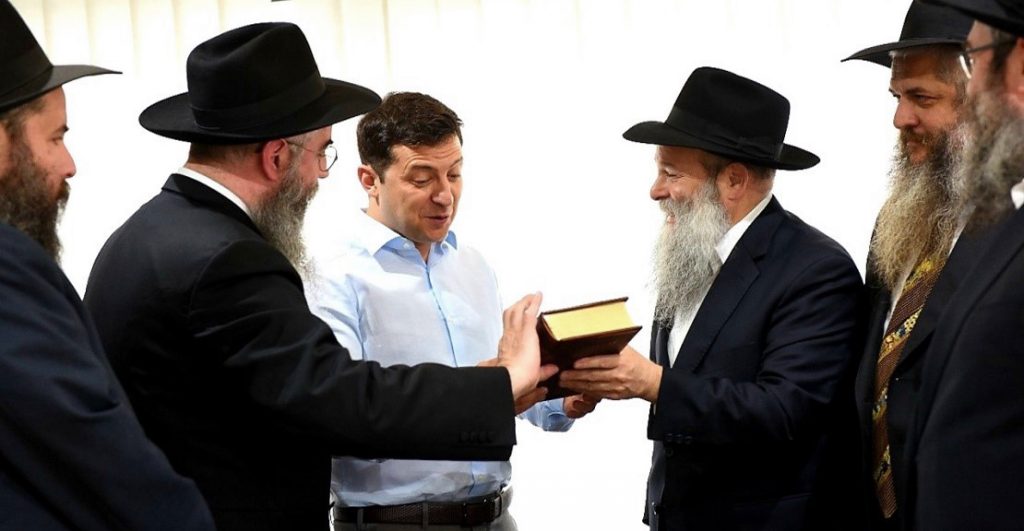
The lands of modern Ukraine have historically been home to various Hasidic movements as well as a significant share of “Lithuanian” Judaism, a non-Hasidic branch with an emphasis on Talmudic scholarship. This mosaic has practically become a thing of the past. A unique situation has arisen in Ukraine: the nearly complete dominance of the Orthodox Jewish Hasidic movement known as Chabad in the sphere of Judaism.
The name “Chabad” is formed from three Hebrew words: “wisdom,” “understanding,” and “knowledge.” The headquarters of this movement, founded in the early nineteenth century, was located in the town of Liubavich (Lyubavichi) in the Vitebsk Governorate of Belarus. However, some of the distinguished rabbis of this movement were buried or born in Ukraine, which explains why the cities of Hadiach, Nizhyn, Mykolaiv, and Dnipro are especially important spiritual centers for Chabad.
The Holocaust was a demographic catastrophe for the Jews of Ukraine. Then, the Soviet government, in its turn, destroyed religious life, repressed and killed rabbis, and closed synagogues. The revival of religious life thus took place thanks to the efforts of visiting rabbis as there were no local cadres.
The first Chabad emissaries arrived back in 1990. Shmuel Kaminetsky became Chief Rabbi of Dnipropetrovsk, and Moshe Moskovitz was appointed Chief Rabbi of Kharkiv. The ancestors of both rabbis had their roots in Ukraine. For example, Rabbi Moskovitz’s grandfather emigrated to Venezuela from the Transcarpathian city of Khust.
Kharkiv is a rare case, where the elderly Rabbi Yoffe, who had led clandestine prayers in earlier decades, was still in his post in 1990, when he was replaced by the young Rabbi Moskovitz.
After the collapse of the USSR, the Chabad movement “parachuted” dozens of rabbis from the U.S. and Israel into Ukraine, and they became firmly entrenched. Today Chabad is without doubt a key player, if not a monopolist, in Jewish religious life in Ukraine, as its synagogues, civic centers, and children’s establishments exist in 23 out of 24 Ukrainian oblast centers.)
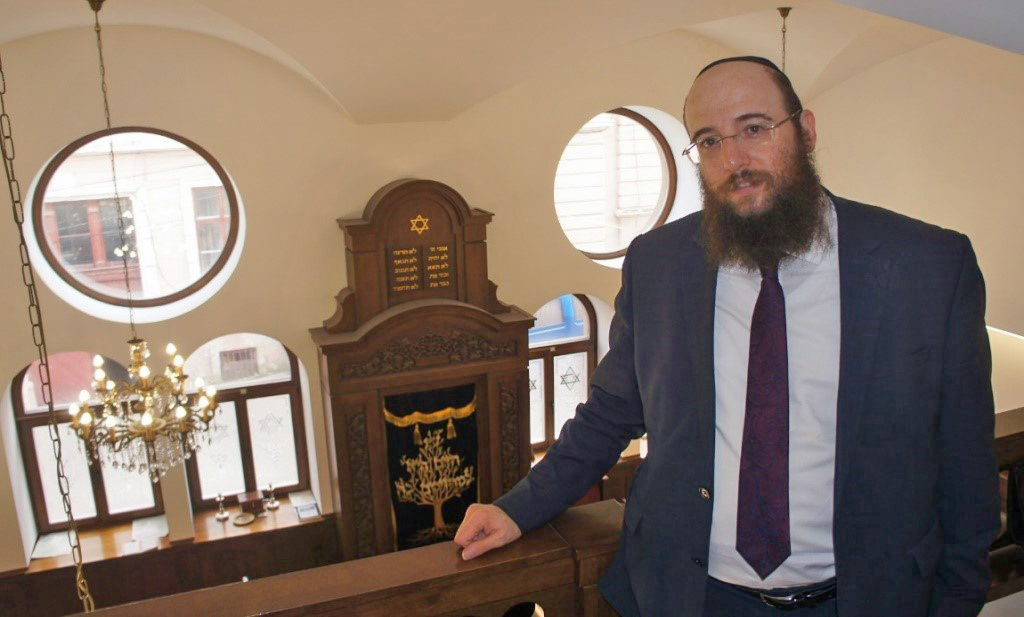
Chabad rabbis have also appeared in several large raion [district] centers and non-regional-level cities. Going to a synagogue in your city today and speaking with the rabbi means, in ninety percent of cases, visiting a Chabad synagogue and communicating with the Chabad rabbi.
All the rabbis from abroad have learned Russian, while some have become fluent in Ukrainian. They take an active part in Ukraine’s civic life. They appear on television and help the entire population, Jewish and non-Jewish, within the framework of charitable projects. The authorities in all the regions of Ukraine view the rabbis as partners and help their social initiatives.
Non-Chabad Judaism
Despite the foregoing, Judaism outside of Chabad still exists in Ukraine.
One of the first Karlin-Stolin Hasidic Jews to come to Kyiv was Yaakov Dov Bleich (Karlin and Stolin are in Belarusian Polissia). In the early 1990s, Rabbi Bleich became the head of an ancient synagogue located on Shchekavytska Street in Kyiv’s Podil neighborhood. It was the only functioning synagogue in the capital of Ukraine at that time.
Rabbi Bleich launched a whirlwind of activity, and the authorities viewed this U.S. citizen as the chief rabbi of Ukraine. To this day, the author of these lines is grateful to Rabbi Bleich for his hospitality and generous table, which were so important for a student in the early 1990s.
Apart from Kyiv, Karlin-Stolin Hasidism has also become firmly entrenched in Lviv, the citadel of the Ukrainian national movement, where another American rabbi, Mordechai Shlomo Bald, has lived since 1993, having mastered the Ukrainian language. Lviv is the only large city in Ukraine—and the only large tourism hub in Europe—without a Chabad center. Perhaps Chabad members have not established a center there out of respect for Rabbi Bald’s achievements.
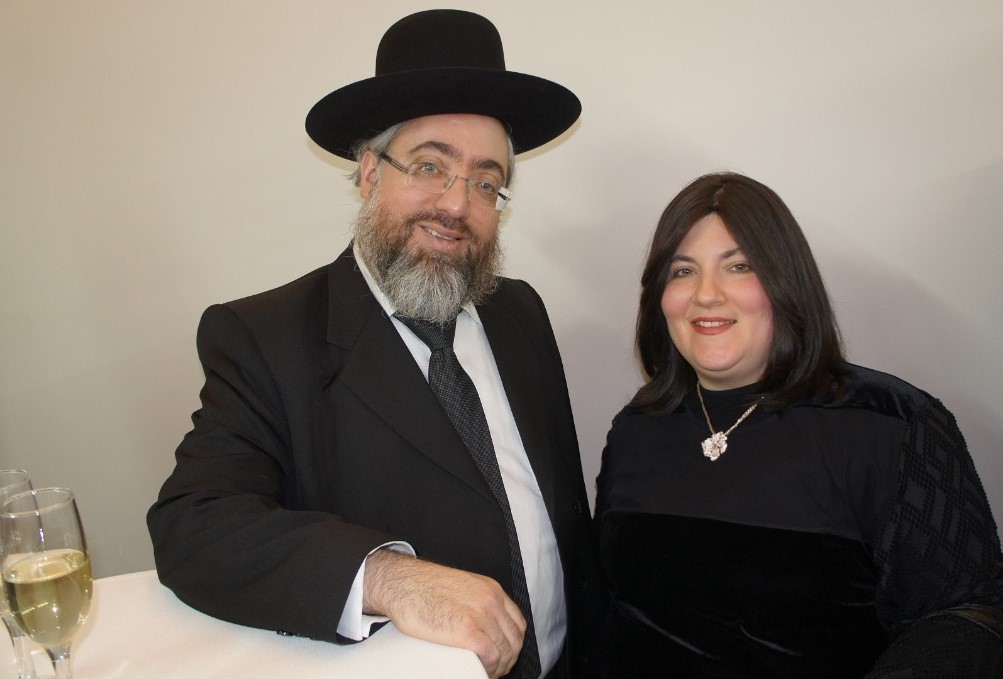
The only Orthodox community in Ukraine that is not part of Chabad is Tikvah, in Odesa, led by Rabbi Shlomo Baksht, a native of Israel. He has managed over twenty years to create an entire educational and religious infrastructure, with established financial support from the United Kingdom. Incidentally, Prince Charles helped raise funds for Odesa’s Jewish children.
Speaking of the “Pearl of the Black Sea,” it must be said that the communities led by Rabbi Avraham Wolff and Rabbi Shlomo Baksht have succeeded in forging relations based on peaceful coexistence; there is enough space in Odesa for all Jews.
Uman stands apart on the map of Judaism in Ukraine. The capital of Breslov Hasidism, Uman has become a “state within a state,” and it bows down neither to Kyiv nor Jerusalem.
It is no coincidence that in the third season of the comedy series Servant of the People (2019), President Holoborodko (played by the actor Volodymyr Zelensky) is given a map showing Ukraine, which has fallen apart. In its center, gleaming like the Star of David, is the Uman Autonomous Jewish Republic headed by Hasidic Jews.
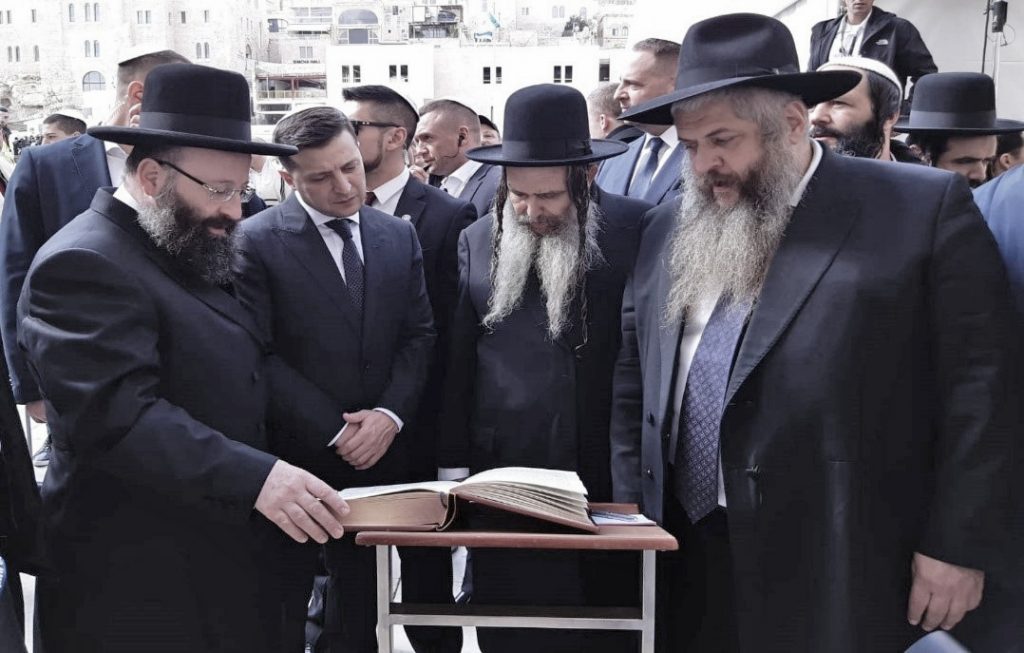
The transporting of tens of thousands of pilgrims from airports to Uman, their accommodation in apartments and hotels, as well as all real estate, retail trade, and arrangements for kosher food in the Jewish quarter surrounding the famous grave of Rabbi Nachman have long been a profitable business (and, in many respects, untaxed), and one in which outsiders cannot gain a foothold.
Communities identifying with Conservative Judaism exist in Kyiv, Chernivtsi, Berdychiv, and a number of other cities. There are also several organizations of Reform Judaism. But all of them put together cannot compare with the “mainstream” communities of Orthodox Judaism behind which stand their sheer numbers, powerful sponsors, and legitimacy from the standpoint of the government.
Three rabbis—four hetmans
The peculiarities of Ukraine’s political system are also evident in this country’s rabbinate system, or, rather, in the absence of any centralized and unified system. The Chief Rabbinate of Ukraine was formed over the course of the nearly three decades since the declaration of Ukrainian independence.
Just as seventeenth-century Ukraine was prone to changing its hetmans, it remains so today. The Chief Rabbinate of Ukraine is set up In keeping with this scheme; it exists, yet it does not. The reason for this is that there is no formal rabbinic hierarchy. All titles of “chief” are rather the external signage of representative goals.
Rabbi Yaakov Dov Bleich calls himself the Chief Rabbi of Ukraine, even though this title is a virtual one, not confirmed anywhere. Three years ago, a conflict arose between Rabbi Bleich and the center of his own Karlin-Stolin movement in the U.S. The upshot of the confrontation was the appearance on the same street, Shchekavytska, of two competing Hasidic communities located in different buildings. This also is a normal state of affairs: Ukraine respects pluralism.
Here is another example. In keeping with a decision passed by the Congress of the All-Ukrainian Jewish Congress, Moshe Reuven Azman, the spiritual head of the Brodsky Synagogue, has the same status as the Chief Rabbi of Kyiv and Ukraine. Rabbi Bleich and Rabbi Azman are on exceptionally good terms with each other, and they are friends. I witnessed this with my very own eyes, right in the hall of the Verkhovna Rada of Ukraine, during a speech delivered by President Reuven Rivlin on the 75th anniversary of the Babyn Yar tragedy in September 2016.
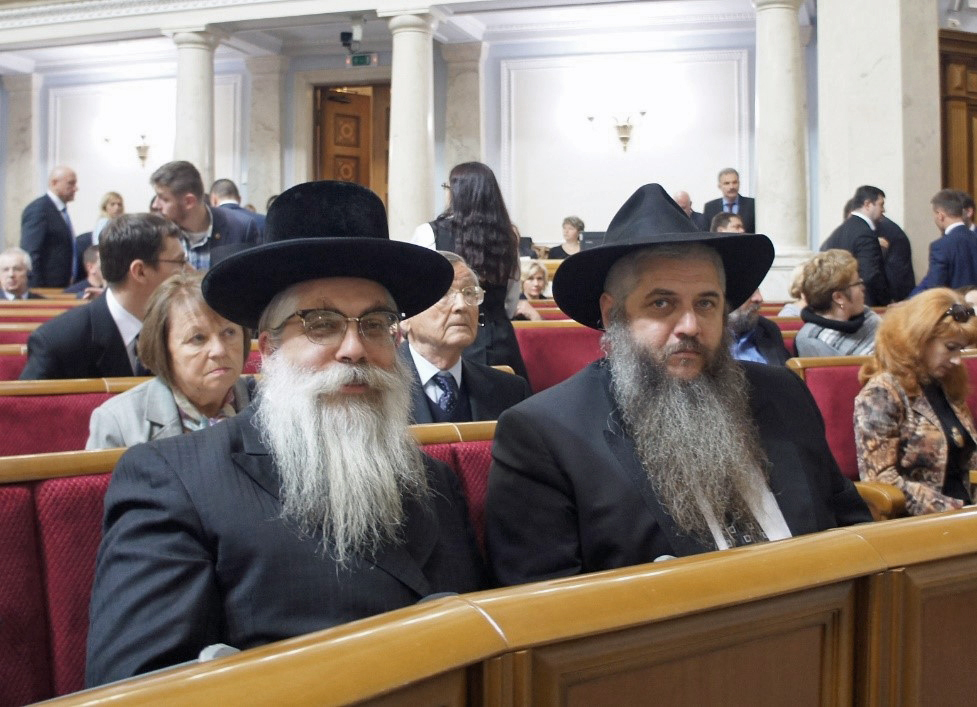
Diversity and the absence of a strict hierarchy are also evident in the system of Ukrainian kashrut, the preparation of foods that devout Jews are permitted to eat. There is no single center, recognized by all parties, with the authority to issue kosher certification throughout Ukraine. Instead, there are local kashruts under the control of local rabbis in various regions.
Rabbi Azman issues kosher certification according to the highest standards of kashrut in Kyiv. A separate empire of kosher production has been established in the city Dnipro under the control of Rabbi Kaminetsky. When my friends are flying in from Dnipro, I always ask them to bring me a couple of packages of tasty Myslyvski sausages from the local factory store.
When the former rabbi of Donetsk, Pinchas Vyshedsky, moved to Kyiv because of the war, he restarted his UkrKosher business, offering a wide assortment of meat, milk, and fish products in central Ukraine. Both rabbis of Odesa also have their own kashrut agency as well as kosher products in Zhytomyr and Uman.
All this is taking place thanks to the special atmosphere of Ukrainian harmony.
The war and the Jews
Since 2014 Ukraine has been living in conditions of ongoing war with all its consequences, including 1.5 million internally displaced people and the impoverishment of the population.
The Maidan, the loss of the Crimean Peninsula to Russia, and combat operations in the Donbas have changed Ukrainian society, including Jewish society. In the past six years, Jews from Kharkiv to Odesa and from Dnipro to Lviv have gone through the process of “Ukrainization.” They have not started speaking Ukrainian exclusively, but many of them now feel part of the Ukrainian political nation, empathizing with their country’s problems.
The conflict over Crimea and the war in the Donbas caused a tectonic rift between Jewish people from Kyiv and Moscow who were once friends. Observing this from the sidelines—from Israel—and communicating with Ukrainian Jews, I can say that the last six years have dispelled the notion of a “single Russian-speaking, post-Soviet Jewish community.” Yes, they may pray together, but there is a high degree of probability that Jews from Kyiv and Dnipro will look askance at Jews from Moscow and St. Petersburg, viewing them as representatives of an aggressor country.
This internal Jewish rift is one of the sad consequences of the conflict between the two countries. Perhaps, given this mess, only Jerusalem and Israel as a whole can become the common denominator for the Jews of Ukraine and Russia.
Local rabbis have been sensitive to the popular mood and the changes in society. Rabbi Azman and Rabbi Kaminetsky blessed their congregations in Kyiv and Dnipro when they wanted to help defend their country.
I will never forget what I saw in the Brodsky Synagogue in Kyiv in early March 2014: a mountain of protective helmets that the community had purchased and delivered to the Ukrainian army’s Special Forces in the Donbas. During this period, the synagogue became the center for transporting Ukrainians wounded on the Maidan to hospitals in Israel.
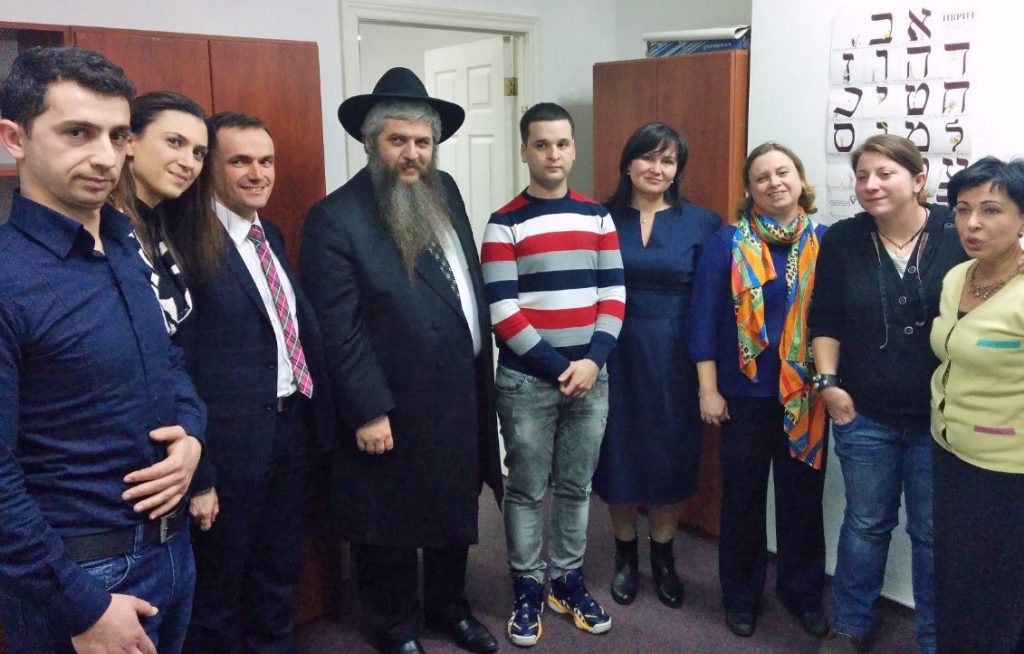
Natan Khazin, who prays regularly at Kyiv’s Brodsky Synagogue, commanded a company on the Maidan in January and February 2014. Later, as an air intelligence officer of the Ukrainian army, he formed a drone squad. It is no accident that donors and activists of the local Golden Rose Synagogue—Ihor Kolomoisky, Hennadiy Korban, Pavlo Khazan, and others—formed the nucleus of people defending Dnipropetrovsk oblast from the separatists in 2014–2015.
Jewish refugees have appeared in Ukraine. These former residents of Donetsk and Luhansk oblasts who fled the war have flooded into Ukraine’s central regions. Trying to figure out how to help them, Rabbi Azman had the brilliant idea of creating a small town for these Jewish refugees.
The construction of the twenty-first-century Jewish town of Anativka began in 2015 in an open field near Kyiv, in the vicinity of the grave of the Rabbi of Chornobyl. This has become a huge success story. Anativka attracted sponsors not only from Ukraine but also from Russia, the U.S., Israel, and the United Kingdom.
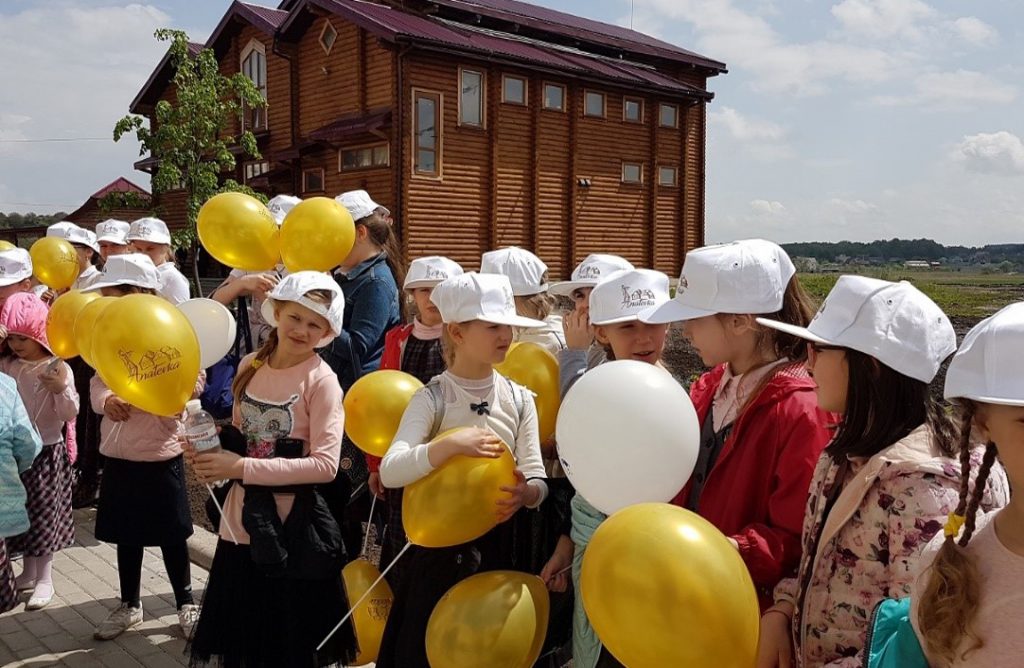
The decommunization process of 2015–2016 erased the names of Jewish revolutionaries from the streets of Ukraine, yet added previously unheard-of names, for example, Lev Landau Prospect in Kharkiv.
Chabad in Ukraine can also boast of its successes in the sphere of street renaming. Streets named in honor of the Liubavich Rebbe have appeared in Mykolaiv and Dnipro, the cities where the future Rebbe was born and raised, respectively, as well as in Kamianske (formerly Dniprodzerzhynsk). In Hadiach, people want to name a section of the street near the grave of the founder of Chabad Hasidism “Alter Rebbe Street.”
“The Pearl of the Black Sea”
Let us examine Odesa as an example of a rabbi’s integration into a large Ukrainian city.
Responding to a question posted on the website of Ukrainian Jewish Encounter, Berl Kapulkin, press secretary of the Jewish community, cited relations between Avraham Wolff, the Chief Rabbi of Odesa and Southern Ukraine, and the government as well as the Ukrainian public as “smooth and friendly.”
Recently, the mayor of Odesa awarded the Order of Labor Glory to the rabbi in recognition of the Jewish community’s services to the city.
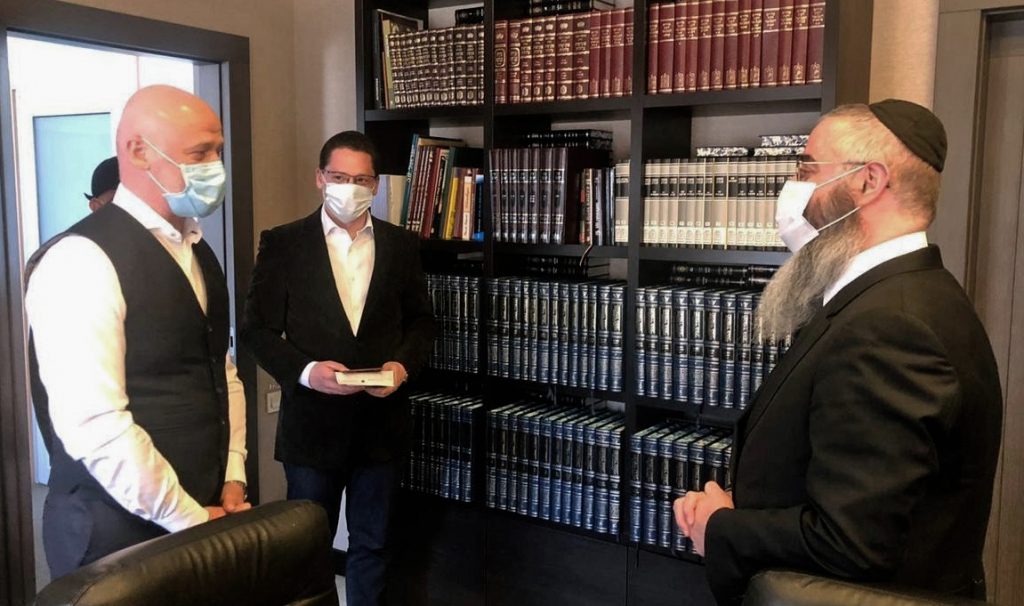
“The rabbi seeks to distance himself from expressing political views. In the name of the community, we never issue proclamations or appeals that might be interpreted as manifestations of sympathy or antipathy to any political parties in Ukraine. The rabbi is rated as one of the most influential people in Odesa, but this is in no way reflected in his relations with the government,” Kapulkin said.
One month ago, at the mayor’s request, the rabbi and other religious leaders in Odesa released a video calling for compliance with the quarantine regulations necessitated by the coronavirus pandemic.
According to Kapulkin, people of opposing political views come to pray at the synagogue. For example, at one time, the members of the congregation included Right Sector activists and people who took part in the Maidan and pro-Ukrainian demonstrations in Odesa—as well as their opponents, some of whom moved to Israel because of the “Ukrainian victory” in Odesa. “Views may differ, but, thank God, it has not reached the point of quarrels and fights in the synagogue over politics,” the community spokesman said.
Representatives of Ukrainian patriotic organizations came to the synagogue in Odesa with a proposal for the movement’s forces to organize protective measures. “They do not want Ukraine to be associated with antisemitism, and they are trying to deter provocations. It has often turned out that the leader of an organization has a Jewish mother or grandmother,” Kapulkin noted.
After a number of antisemitic incidents, for example, anti-Jewish graffiti, representatives of the Right Sector and the Black Sea Cossacks visited the synagogue in Odesa, offering their help to track down the culprits. The Ukrainian activists had a “firm” informal conversation with the perpetrators of these antisemitic provocations.
In one way or another, a number of projects and Jewish community institutions affect the interests of the city by helping to tap into the municipal budget (for schools, help for the elderly). “Our pro-Ukrainian position is manifested in this; we are trying with all our might to ease the lives of Ukrainian citizens, we are trying to ensure that Ukraine becomes a strong and stable state in the economic and legal senses,” Kapulkin added.
Starting in the spring of 2014, Avraham Wolff, Rabbi of Odesa, and his brother, Yosef Wolff, Rabbi of Kherson, encountered a political problem. Their younger brother, Binyamin Wolff, who is the Rabbi of Sevastopol, remained with his community in Crimea, which was annexed by Russia. Rabbi Binyamin’s Facebook page regularly features texts in support of the annexation, as well as expressions of thanks to the government of Russia for the “Russian spring” and “salvation from the Banderites.”
In answer to my question of whether this has affected the attitude of the Ukrainian secret services toward the elder Wolff in Odesa, the community spokesman said: “As far as I know, not at all. Everyone understands perfectly well what his [Rabbi Binyamin’s] words are connected to.” It should be noted that, according to a number of opinions, the Facebook page of the Rabbi of Sevastopol is under the complete control of advisers from Russia’s FSB, and they are the ones who are posting these propaganda materials in the name of the rabbi.
Ze-rabbis
On the day of the second round of Ukraine’s presidential elections, I was celebrating Passover in Transcarpathia with nearly a hundred Jews from the Dnipro community. Interviewing these people, I heard only one answer concerning the way they had voted: for Zelensky. There was not a single vote for Poroshenko. The sympathies of the Dnipro Jews were obvious.
On 6 May, shortly after his victory in the 2019 elections, the President-elect of Ukraine, Volodymyr Zelensky, met with a group of rabbis, after communicating, of course, with Orthodox hierarchs and Muslim muftis. The group of rabbis was led by Shmuel Kaminetsky, the head of the Council of Hasidic Rabbis of Ukraine and a recognized authority in the Chabad world. It is said that Kaminetsky is the only rabbi whose opinions matter to Ihor Kolomoisky.
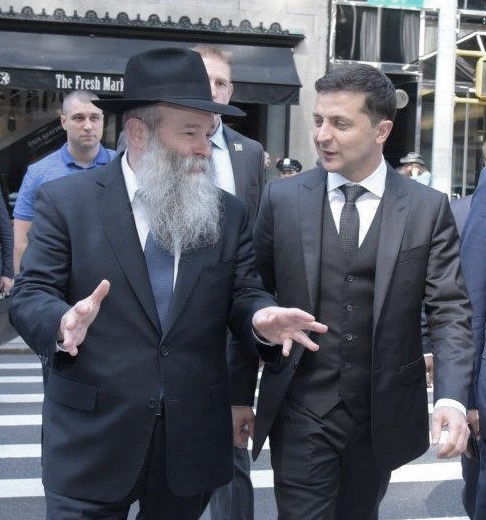
One of the rabbis who took part in this meeting told Zelensky an old anecdote. In reply to Henry Kissinger’s statement that “first I am an American [then] I am a Jew,” [The original statement reads: “...first I am an American, second I am Secretary of State and third I am a Jew.”—Trans.] Golda Meir said: “Henry, you forget that in Israel we read from right to left.” The rabbi added: “Don’t forget that the Jews of Ukraine also read from right to left.” The joke was a hit with Zelensky, who jotted it down in his notebook.
Today the rabbis of Ukraine can achieve a lot—both for their community and for Ukraine as a whole.
Rabbi Yaakov Dov Bleich’s name is well known in the World Jewish Congress and the Jewish Confederation of Ukraine, headed by Boris Lozhkin.
Rabbi Moshe Reuven Azman has strong ties to the people around U.S. President Donald Trump, as well as influential senators and congressmen from both parties. In April and May 2020, Rabbi Azman made urgent arrangements in Anativka to sew special protective clothing for free distribution to doctors working in hospitals in Ukraine to fight the coronavirus.
Rabbi Shmuel Kaminetsky is closer than others to President Zelensky, who is his “countryman” from Dnipro oblast. Kaminetsky first met Zelensky the actor and his team in April 2010, at the Golden Rose Synagogue.
Volodymyr Zelensky epitomizes the demand for establishing peace. This is what Ukrainian society and his voters expect of him.
A chance to resolve the conflict between Russia and Ukraine still exists, and Ukrainian rabbis may play an important role both in turning it into a reality and in strengthening Ukraine’s position in the international arena.
Text and photos: Shimon Briman (Israel)
Photos: Press Service of the Jewish community of Odesa; the website of the Jewish community of Dnipro; the website of the Jewish community of the Brodsky Synagogue
Translated from the Ukrainian by Marta D. Olynyk.
Edited by Peter Bejger.



















